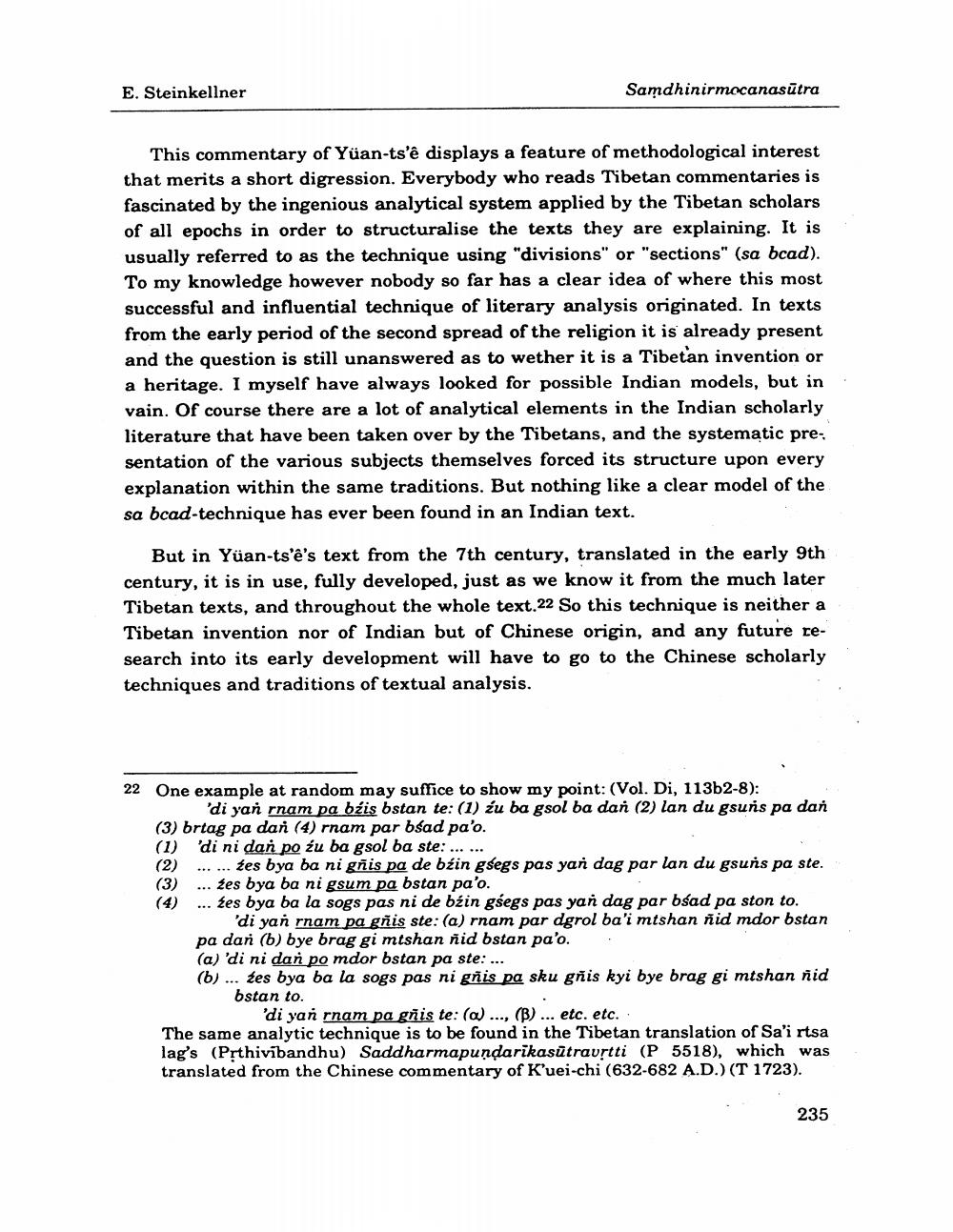Book Title: Who Is Byan Chub Rdzu Phrul Author(s): Ernst Steinkellner Publisher: Ernst Steinkellner View full book textPage 7
________________ E. Steinkellner Samdhinirmocanasūtra This commentary of Yüan-ts'ê displays a feature of methodological interest that merits a short digression. Everybody who reads Tibetan commentaries is fascinated by the ingenious analytical system applied by the Tibetan scholars of all epochs in order to structuralise the texts they are explaining. It is usually referred to as the technique using "divisions" or "sections" (sa bcad). To my knowledge however nobody so far has a clear idea of where this most successful and influential technique of literary analysis originated. In texts from the early period of the second spread of the religion it is already present and the question is still unanswered as to wether it is a Tibetan invention or a heritage. I myself have always looked for possible Indian models, but in vain. Of course there are a lot of analytical elements in the Indian scholarly literature that have been taken over by the Tibetans, and the systematic presentation of the various subjects themselves forced its structure upon every explanation within the same traditions. But nothing like a clear model of the sa bcad-technique has ever been found in an Indian text. But in Yüan-ts'ê's text from the 7th century, translated in the early 9th century, it is in use, fully developed, just as we know it from the much later Tibetan texts, and throughout the whole text.22 So this technique is neither a Tibetan invention nor of Indian but of Chinese origin, and any future research into its early development will have to go to the Chinese scholarly techniques and traditions of textual analysis. 22 One example at random may suffice to show my point: (Vol. Di, 113b2-8): 'di yan rnam pa bíis bstan te: (1) iu ba gsol ba dan (2) lan du gsuns pa dan (3) brtag pa dan (4) rnam par bśad pa'o. (1) 'di ni dan po žu ba gsol ba ste: ...... (2) ...... Zes bya ba ni gñis pa de bzin gsegs pas yan dag par lan du gsuns pa ste." ... Zes bya ba ni gsum pa bstan pa'o. (4) ... Zes bya ba la sogs pas ni de bżin gśegs pas yan dag par bsad pa ston to. 'di yan rnam pa gñis ste: (a) rnam par dgrol ba'i mtshan nid mdor bstan pa dan (b) bye brag gi mtshan nid bstan pa'o. (a) 'di ni dan po mdor bstan pa ste: ... (b) ... Zes bya ba la sogs pas ni gñis pa sku gñis kyi bye brag gi mtshan nid bstan to. 'di yan rnam pa gñis te: (a)..., (B)... etc. etc. The same analytic technique is to be found in the Tibetan translation of Sa'i rtsa lag's (Prthivībandhu) Saddharmapundarikasūtravrtti (P 5518), which was translated from the Chinese commentary of K'uei-chi (632-682 A.D.) (T 1723). 235Page Navigation
1 ... 5 6 7 8 9 10 11 12 13 14 15 16 17 18 19 20 21 22 23
